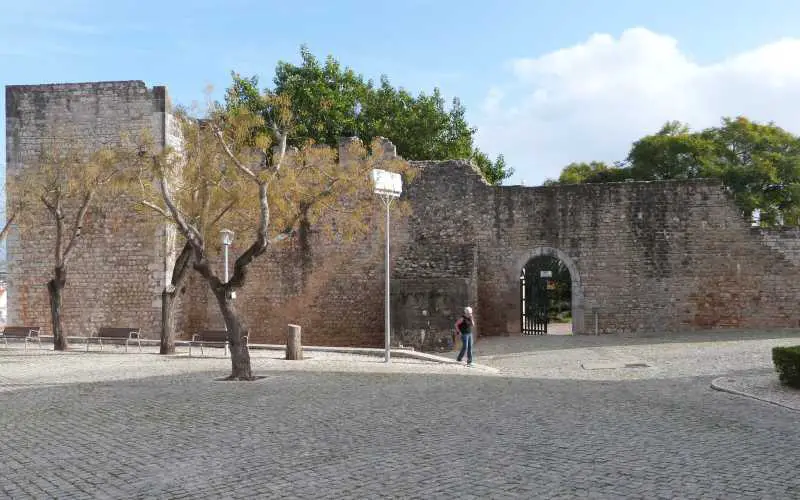If on a day trip to the quaint little fishing town of Tavira, your day should definitely include a trip to Tavira Castle or Castelo de Tavira as it is known by the locals. The ruins of this medieval castle date back to the 11th century, when the Algarve region was under Moorish rule. However, the area was conquered by Christian Crusaders in 1242, with the castle being expanded by King Dinis in 1294 and further expansion of the city walls happening in 1296 – it is these expansions that visitors see today, although damaged due to the earthquake of 1755. The castle walls have been declared a National Monument since 1939. What remains, gives you a very good idea of the various different construction stages of this castle throughout the centuries.
Initially, the castle was used to defend Tavira against further Moorish invasion. Later, it was then used to guard the little fishing town from invasion by North African pirates, given its vantage point looking over the river Gilão.
Upon entry to the castle, you can enjoy a fresh lemonade or orange juice, from a stand for only €1. What remains following the 1755 earthquake are walls of 3 sides and 3 of the towers. There is now no evidence of a keep, though I imagine there would have been one at some point in the castle’s history. There are also some lovely well-maintained gardens within the castles for visitors to enjoy. It is small but does have so much charm. You can climb to the top of the walls, to get better views out over the city. The stairs can be quite steep but there are handrails to help. I would still advise making sure you’re wearing sensible footwear. The views from the castle are incredible, they look down over Tavira itself and also over the Parque Natural da Ria and a visit to the castle is worth it, just for the views alone!
Sometimes there will be buskers within the garden, which I feel kind of adds to the overall vibe of the castle.
One thing to note is that there’s not much signage, guides etc when in the castle to explain the history of the castle etc.
There are several legends or mythological stories associated with the castle. One of which is that every year, on Midsummer’s day (24th June) a ghost of the daughter of the Moorish castle’s governor, who was defeated in 1239, can be seen haunting the castle. Legend tells that he had always planned to return, conquer Tavira again and ransom his daughter but this never happened. Many people have also said that they have heard the ghost crying out into the darkness!
The castle is open to visitors from 10 am to 5 pm during the winter months and from 10 am to 7 pm during the summer months. It is completely free entry for everyone! Some visitors have noted that on occasion, you’ll see someone standing at the main door, chancing their luck and trying to take payments from visitors! You don’t have to pay anything!
The castle is not far from Tavira town centre at all and can be easily reached by walking from the train station – it is approx 1km and could be walked in approx 10/15 minutes. It is very well signposted!
Next door to the castle, you also have the Church Santa Maria do Castelo, which has an incredible bell tower (if your legs can handle another climb) and also a little museum if you have the time to enter.
Yes, this castle is on the smaller side, yes, it is really just the ruins of the castle that remains. But don’t dismiss it. If the history of the Moorish occupation of the Algarve is of interest to you, this is a must-see! If archaeological buildings are of interest to you, this is a must-see! If you are looking for somewhere that has an incredible vantage point over a town and amazing views that on good days can stretch as far as the south coast, this is a must-see!
And with it being within easy walking distance from the town centre and with it having free entrance for all, there’s really no excuse for not paying Tavira Castle a visit next time you’re in the area!
If you enjoyed this article you might also like to read about Tavira Island and Day Trips from Tavira



3 thoughts on “Tavira Castle”